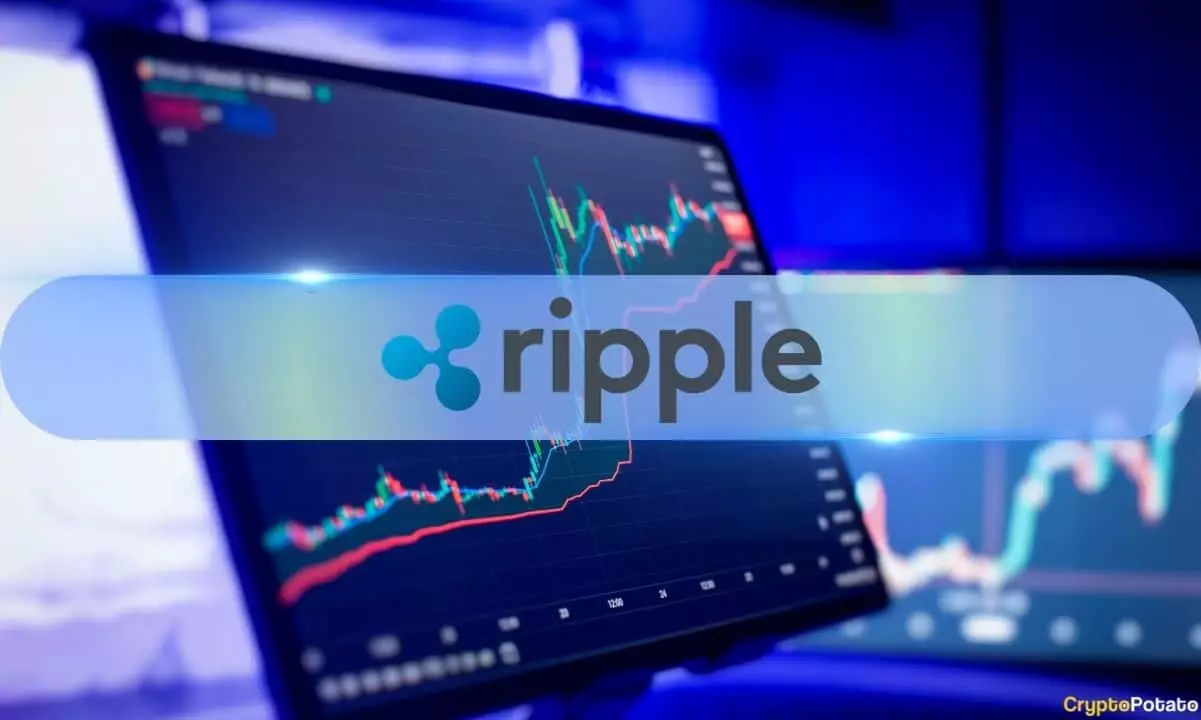In an era where regulatory scrutiny has often stifled the crypto landscape, XRP’s recent triumph over the U.S. Securities and Exchange Commission (SEC) stands as a beacon of resilience and fortitude. Ripple Labs, the brain behind XRP, endured a years-long legal showdown that many presumed would cripple the token’s market position permanently. However, the announcement that the SEC has chosen not to proceed with its appeal signals a significant victory not just for Ripple, but for the broader crypto ecosystem grappling with uncertain regulations. This legal vindication has paved the way for XRP to emerge as one of the leading tokens, reclaiming its worth and purpose in a market riddled with turbulence.
This pivotal courtroom success was further complemented by a reduction in Ripple’s hefty fine from $125 million to a mere $50 million. This breech of legal tension arguably creates a domino effect, encouraging institutional investors who had hesitated due to regulatory concerns to finally consider dipping their toes into XRP investments. Here lies a crucial paradox: while government oversight aims for consumer protection, its heavy-handed approach often stifles innovation and limits participation in revolutionary technologies. XRP’s legal saga exemplifies how untangling these judicial webs can yield not only favorable outcomes for individual entities but stimulate an entire industry’s growth.
Market Momentum: Unprecedented Price Surge
XRP has captivated the market with its astounding price surge, which peaked at $3.40 in early 2025—a price point reminiscent of its 2018 glory days. This vigorous rally, charting an impressive 295% increase year-over-year, offers a sharp contrast to the performance of other cryptocurrencies like Bitcoin and Ethereum, whose growth narratives appear muted in comparison. The ability to decouple from the patterns of major players in the market like BTC and ETH, especially when they faced declines, showcases XRP’s escalating competitive edge.
While a 2.5% drop after this high is notable, the prevailing upward trajectory illustrates a resilience that all investors should pay attention to. Traditional financial systems may be slow to adapt; however, the agility of cryptocurrencies like XRP to leverage market sentiment and establish price momentum cannot be overstated. Such volatility, while often scrutinized, serves as the driving force behind much of the excitement in the crypto realm. Investors thrive on it, not just for potential profit but also for the opportunity to back projects that are more than just speculative assets.
Institutional Engagement: A Shifting Paradigm
Beyond the congratulatory tones surrounding XRP’s recent price performance lies the critical metric of institutional interest. Ripple’s decisive acquisition of brokerage giant Hidden Road for $1.25 billion exemplifies a strategic shift aimed squarely at deepening integration of XRP into the traditional financial framework. As Wall Street matures in its understanding of digital assets, the enthusiasm surrounding the advent of XRP-linked Exchange Traded Funds (ETFs) is paramount. Franklin Templeton’s filing for a U.S.-based spot XRP ETF is indicative of a monumental shift where once-cynical financial institutions are now positioning themselves to capitalize on the burgeoning crypto market.
Moreover, Hidden Road’s plan to implement Ripple’s RLUSD stablecoin within its post-trade workflows signals a significant vote of confidence in XRP’s utility and stability in various financial operations. Such integration not only lends credence to XRP’s operational legitimacy but also forecasts a future where blockchain technology and traditional finance coalesce. Consequently, the credibility gap between digital and conventional finance is narrowing thanks to strategic moves like this one.
On-Chain Activity: A Mixed Bag
Despite the euphoric tones resonating from market performance and institutional advances, the accompanying data on XRP Ledger (XRPL) presents a more tempered narrative. On-chain activity noted a significant contraction, with a decline of 37% in transactions and a staggering 40% drop in new wallet creations compared to previous quarters. These figures trigger a cautious optimism, indicating that while XRP is soaring, its underlying transaction activity may be bogged down—a critical aspect for sustaining long-term growth.
This dichotomy invites scrutiny into the health of the XRPL ecosystem. High trading volumes matter little if the utility of the network stalls. Hence, incentivizing on-chain activities should become a priority for Ripple to ensure that the token’s success is built on a solid foundation of user engagement, not just speculation. Balancing institutional momentum with grassroots activity is essential for maintaining XRP’s positive trajectory in a notoriously fickle market.
As XRP navigates this complex landscape of legal victory, market momentum, institutional adoption, and on-chain dynamics, it serves as both a case study in resilience and a cautionary tale about the inherent volatility in the crypto market. As the narrative of XRP unfolds, it will undoubtedly shape the dialogues surrounding regulatory frameworks and digital finance in the years to come.

